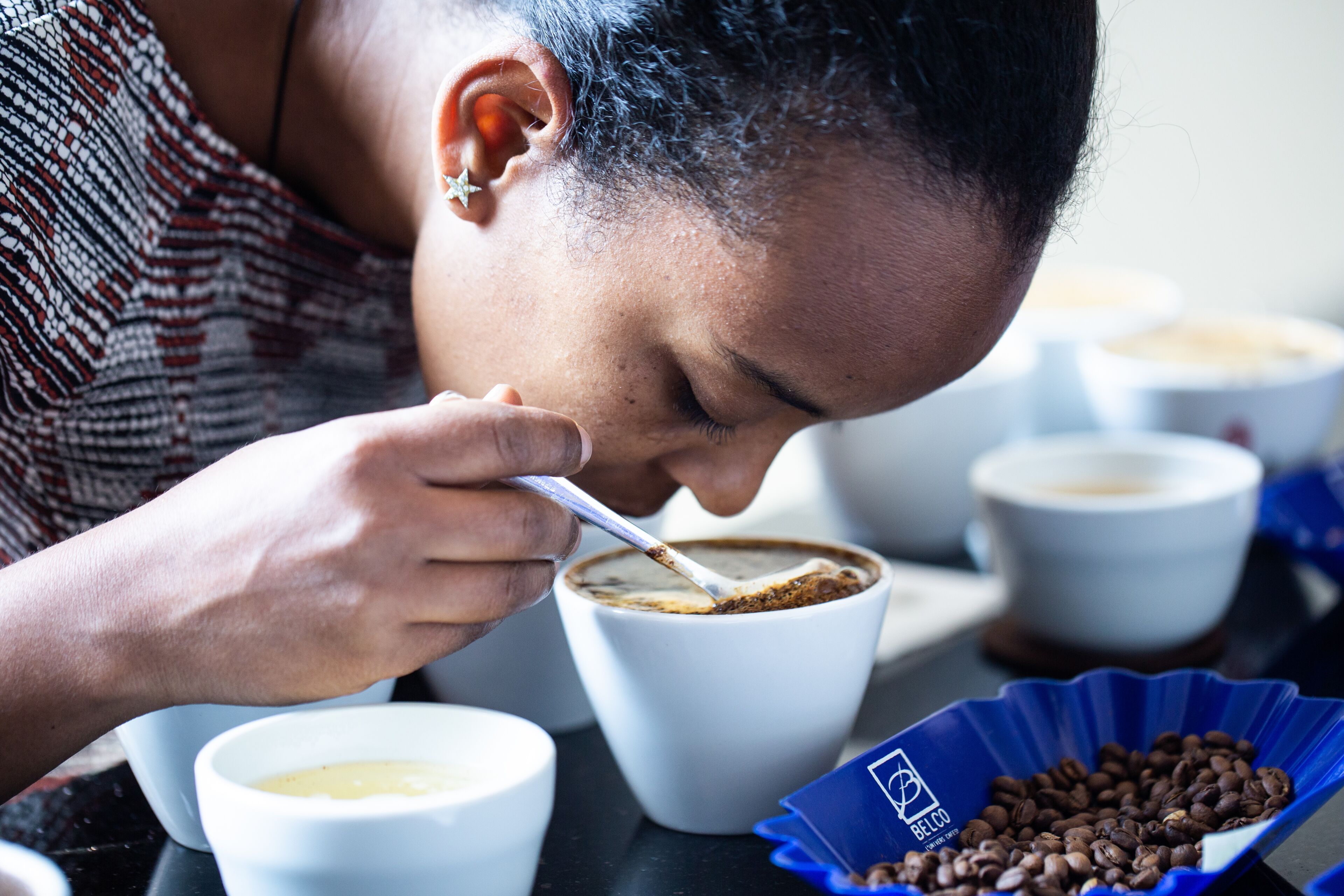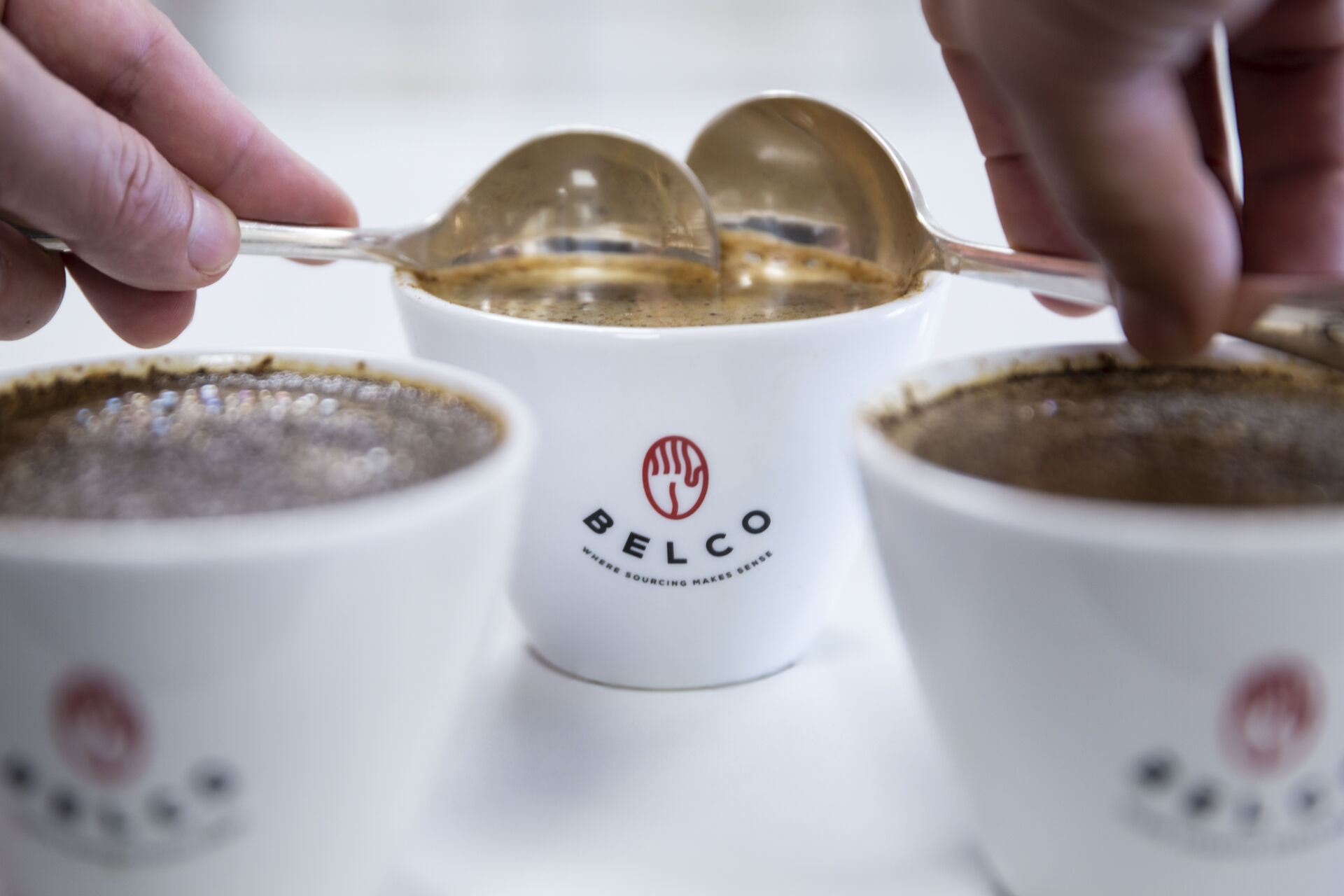
All you need to know about the cupping protocol
The cupping protocol is a standardised, international protocol for tasting and evaluating coffee. In this article, I explain everything you need to know to make the cupping protocol a routine and improve your coffee-tasting skills.
This tasting method simply involves pouring a defined quantity of water over a defined quantity of coffee, in a bowl or glass filled to the brim. For simplicity's sake, we recommend using cupping bowls.
The aim is to be as neutral as possible in the method of preparation and tasting. The idea is not to evaluate a drink, but the potential of a coffee, and to be able to understand each other throughout the coffee chain, from producer to roaster.
Why organise cupping?
As a professional, there are many times to cupping:
- to buy green coffee
- to check your roast
- to evaluate several coffees and make a blend
Of course, there are many other reasons for cupping. For example, with your customers to show them the diversity of your coffee offer, or with your colleagues to calibrate yourselves.
What equipment do I need for cupping?
Of course, a minimum of equipment is needed to carry out a professional cupping. To make sure it's effective, you'll need :
- cupping bowls
- cupping spoons
- a grinder
- a weighing scale
- a timer
- hot water

Three parameters to look after for a valid cupping
To be as consistent as possible from one cupping to the next, and during the same cupping, your extraction parameters should remain the same from one cup to the next. The only valid variable is your coffee.
Here's the list of parameters to set:
- the ratio of coffee to water
- the grind, equivalent to a filter grind
- the water used (temperature and ppm)
These three parameters should enable you to obtain sufficient extraction to discover the full complexity of the coffees you make.
At Belco, our ratio is always 1:18, i.e. 18 g of water for 1 g of coffee.
To be sure you're extracting enough, you can use a refractometer to assess the TDS (Total Dissolved Solids).
For SCA, the most important TDS is that of the water, not of the extraction, which must be taken into account. The TDS of a good coffee water should be between 125 and 175 ppm.
How many cups per coffee?
The main purpose of cupping is to assess the qualities and defects of a coffee. To do this, you need to taste several cups of the same coffee to get an overall view of the coffee.
The number of cups depends on your cupping objective.
If you're cupping to buy green coffee, we recommend cupping 5 cups of the same coffee, to assess the consistency of your purchase from one cup to the next.
When buying green coffee, the homogeneity of the batch is one of the most important things to check. At Belco, we apply the recommendations of the SCA, and always taste 5 cups of a coffee.
To check your roast, depending on how much time you have, you can boil 5 cups as well. But you can make it with less, as the homogeneity has normally already been checked at the time of purchase.

How to do it right?
Once your coffee is ground, the water has heated up and you've poured the right amount of water over your coffee in the correct ratio, start the timer.
- Smell the dry grind, then pour in the water.
- At 4', you can break the crust with the back of the spoon. 3 strokes on the surface, towards the front, starting from the edge of the cup closest to you. This is the moment to stand over the cup and assess the volatile aromas.
- At 5', skim the surface of the bowl using 2 spoons.
- At 10', you can start cupping. The coffee should be brought down to a temperature of around 70°.
During the 1st tour, discover the profile of the coffees without asking yourself too many questions. This is a first approach to warm you up. At this point, the water is still too hot for your coffee to reveal itself.
If you are cupping several cups, pay attention to the homogeneity of each cup and any possible defects.
In the 2nd round, assess the aroma, length, acidity and body.
And finally, finish with a third round to analyse the balance of the coffee and summarise your overall impression.
How do you get a good spooning?
I advise you to take the coffee from the surface of the bowl, gently, to avoid catching coffee when dipping the spoon into the cup.
Bring the spoon to your mouth. This is the famous "slurp" that accelerates the entry of the liquid into the mouth, so that it spreads out on the tongue and palate and releases the aromatic molecules.
Don't be afraid to make noise, and if you don't, don't worry either. Everyone has their own way of 'slurping'!
Next, swirl the coffee around in your mouth to assess its body, texture, acidity, bitterness and sweetness.
Finally, you can spit or swallow the coffee, and think about how long it lasts in your mouth.

My latest advice
Remember to always take the same amount of coffee in your spoon, and to repeat the same gestures once the coffee is in your mouth.
Warm your spoon before you start cupping, to prevent it from cooling the coffee too quickly.
Between each round, rinse your spoon in a glass, using clear water heated to the same temperature as your coffee (93°C).
Now it's your turn to explore the diversity of coffees, to have fun without being afraid to cup and to express yourself. Good cupping isn't about talent, it's about repetition and questioning yourself.
What product should I use to make this recipe ?
Did you like this article? Share it with your community:
